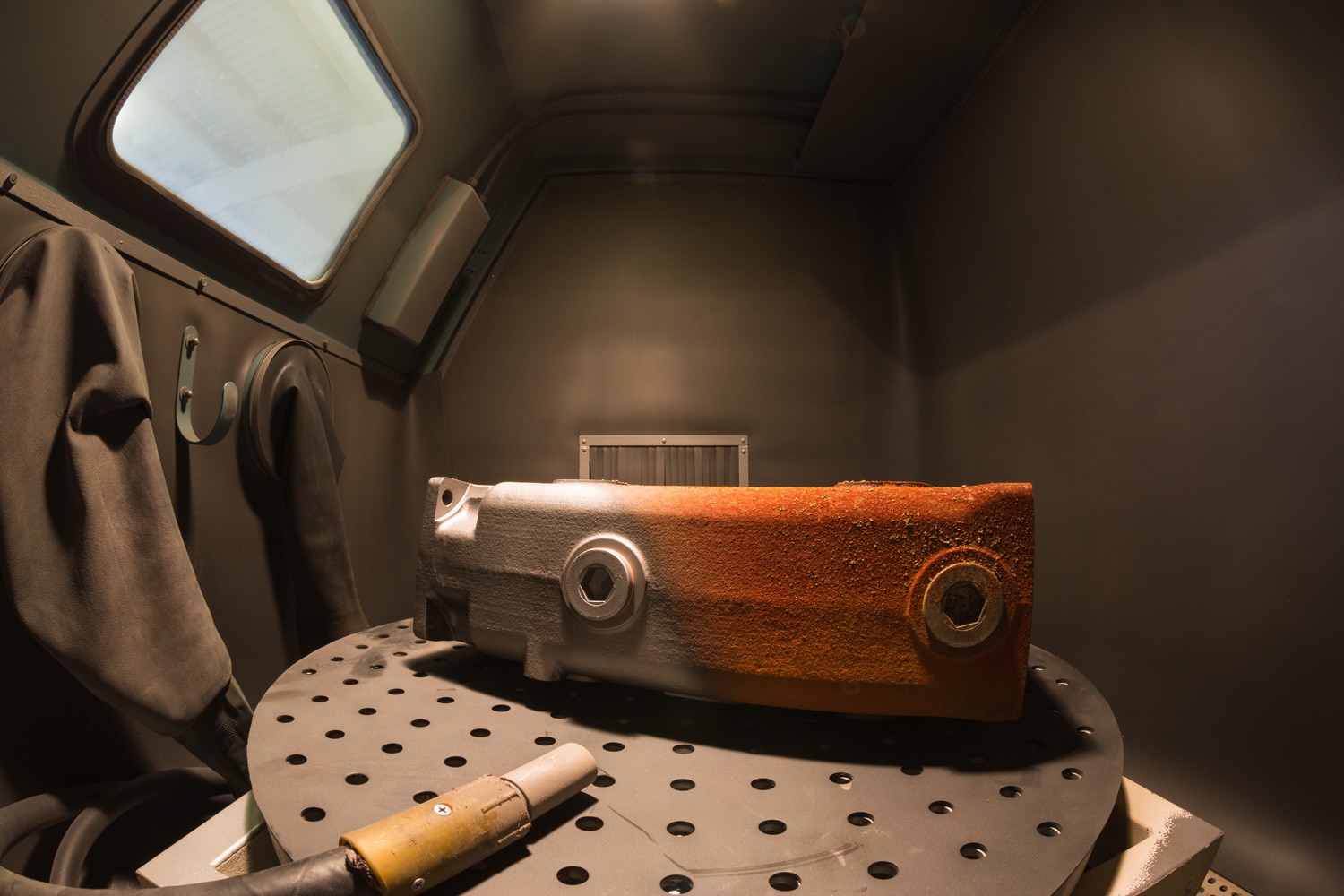Dry-Ice Blasting vs. Sandblasting: What's the Difference?
Two very different processes for stripping down a vehicle's body panels.
 Shutterstock
Shutterstock
Article QuickTakes:
There are several types of media blasting available to automobile owners, but they don't return the same results. This is illustrated by comparing two common types: dry-ice blasting and sandblasting. Each of these involves shooting a stream of small pellets, or grains of sand, under pressure at your car's parts, but there are important reasons for choosing one over the other for specific projects.
Here's a look at the differences between dry-ice blasting and sandblasting.
Sandblasting Basics
The term "sandblasting" is both evocative and accurate. This process involves aiming a stream of high-pressure particles at a metal panel and using it as an abrasive. Although silica is no longer used due to health concerns, sandblasting has become a generic term for shooting glass beads, nut shells, or similar materials. Think of it as using sandpaper to remove paint, rust, or any other layer of material only it's much quicker and more effective than manual sanding or even power sanding.
 Dice Restoration Solutions
Dice Restoration Solutions
Dry-Ice Blasting Explained
Dry-ice blasting substitutes pellets of dry ice, another term for carbon dioxide that has been frozen to minus 110 degrees Fahrenheit, in place of sand. While it's also pressure blasted at a panel, it doesn't rely on friction to wear away at a material. Instead, it uses the mechanism of the dry ice evaporating as it strikes the surface of the part to eliminate dirt, with the resulting gases working as cleansers.
Which Technique to Use?
Sandblasting is an abrasive and aggressive process that is typically employed to strip paint or rust from metal. It's one of the most cost-effective ways to bring a panel down to bare metal, and it's often used when doing a total restoration of a vehicle's body or its frame.
Dry-ice blasting is comparatively gentler. Since it doesn't rely on friction, it's safe to use on painted panels, engine parts, glass, and chrome trim. This makes it more appropriate when dealing with extreme grime, oil stains, or other tarnishes that would require significant effort to remove by hand, with chemicals, or with a power polisher.
Pros and Cons of Dry-Ice Blasting vs. Sandblasting
Sandblasting is a very effective tool for rust and paint removal, but it's also messy, with bits of sand — or the media chosen for your application — often working their way into every crevice of a vehicle. The force of sandblasting can even perforate a panel that has been weakened by rust. It's a relatively affordable process, with prices starting around $75 an hour, but can go up for specialty work.
Dry-ice blasting is more expensive, with professionals charging more than $300 an hour to clean your vehicle in-house (with some do-it-yourself shops dropping that by around $150). Cleaning can take anywhere from five to eight hours, meaning total cost can easily surpass several thousand dollars, depending on the vehicle. It doesn't leave a mess behind and is usually so gentle that there's less worry about damage during the cleaning process.



